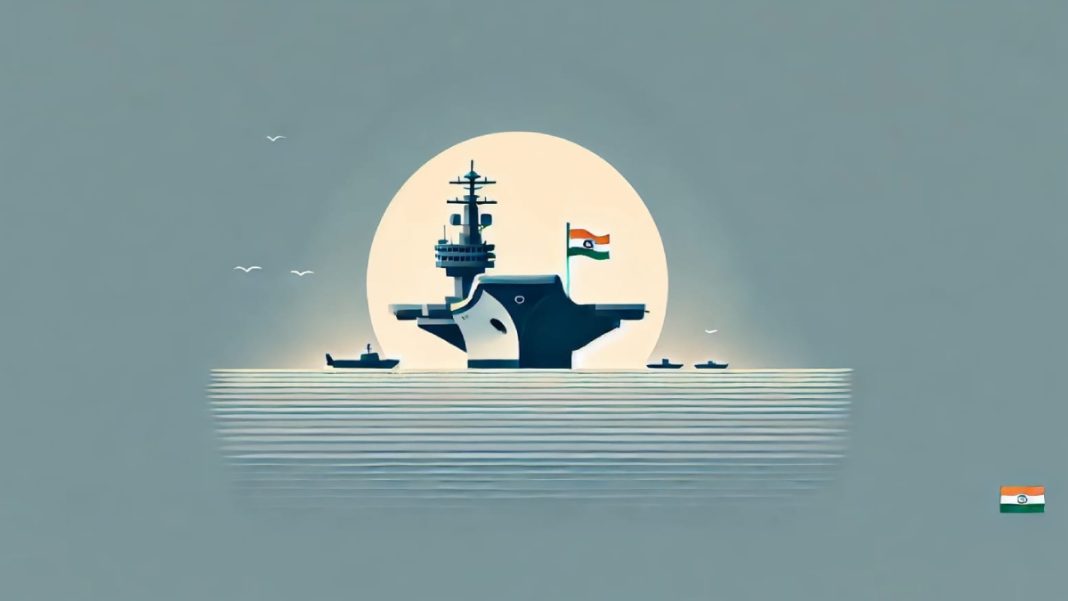On November 4, 2024, the Pakistan Navy made headlines with the announcement of its test of the Ship-Launched Ballistic Missile (SLBM), referred to as SMASH. This development has been interpreted by many analysts as a strategic show of strength timed deliberately to coincide with the forthcoming Indian Navy Day on December 4, a commemorative date marking India’s key victory over Pakistan during the 1971 war.
Pakistan has heralded the SMASH missile as a significant technological milestone, boasting a range of over 350 kilometers and the capability to strike both land and sea targets. Nonetheless, several defense analysts have raised concerns regarding the actual strategic value of this development. They highlighted Pakistan’s relatively limited technical expertise and operational experience in advanced maritime weaponry, arguing that the SMASH initiative seems more symbolic than a genuine challenge to the dominance of the Indian Navy in the region.
In stark contrast, India continues to make substantial advancements in missile technology and naval capabilities. On November 16, 2024, the Defence Research and Development Organisation (DRDO) of India successfully conducted a flight trial of its first long-range hypersonic missile, designed to carry various payloads over distances that exceed 1,500 kilometers. This achievement marks a critical leap forward in defense technology, significantly outpacing Pakistan’s modest advancements in military hardware.
Complementing these developments, the Indian Navy reinforced its operational capabilities with the deployment of Medium Range Surface-to-Air Missiles (MR-SAM), which provide a defensive range of 90-100 kilometers. This sophisticated missile system offers robust protection for India’s naval assets against threats posed by neighboring countries. Furthermore, the Indian Navy is actively developing next-generation interceptor systems aimed at neutralizing a diverse array of threats, showing a commitment to maintaining its technological edge.
The legacy of maritime superiority for India is deeply entrenched in historical contexts. The notable successes achieved during the 1971 Indo-Pak War, particularly Operations Trident and Python, demonstrated India’s naval prowess. Operation Trident delivered a significant blow to Pakistan’s naval assets by targeting critical fuel reserves and sinking the destroyer PNS Khaibar. Subsequent actions of Operation Python further disrupted the operational capabilities of the Pakistan Navy.
In more recent conflicts, such as the Kargil War of 1999, the Indian Navy showcased its strategic dominance through Operation Talwar, during which a formidable naval fleet was deployed in the Arabian Sea to deter Pakistan from escalating the conflict into maritime avenues. Such instances underline India’s control over critical sea lanes and affirm its maritime superiority.
In the wake of the Kargil conflict, the Indian Navy has embarked on a sweeping modernization program that includes the induction of advanced platforms, such as the INS Vikramaditya and the indigenously developed INS Vikrant—India’s first aircraft carrier. The incorporation of nuclear-powered submarines like INS Arihant and INS Arighat has further solidified India’s status in maritime military technology. The anticipated addition of the INS Aridhaman submarine promises to enhance India’s second-strike capabilities, an area where Pakistan lags considerably.
As the Indian Navy continues to focus on integrating advanced missile systems, including the BrahMos supersonic cruise missile and progresses in anti-submarine warfare technologies, it is poised as the leading maritime power in the region. This not only enables India to address challenges from relatively inexperienced neighbors but safeguards national interests effectively.
While Pakistan’s developments like the SMASH missile attract considerable media attention, they do little to alter the strategic balance in the region. With its superior technological capabilities and historical legacy of maritime dominance, India fortifies its defense posture to secure vital national interests. Acting as a primary security provider in the Indian Ocean Region, the Indian Navy plays a pivotal role in upholding stability in crucial international waters. Through indigenous innovation and strategic foresight, the Indian Navy not only secures its maritime interests but also significantly contributes to regional peace and stability, reinforcing its status as a seasoned and capable maritime force.





